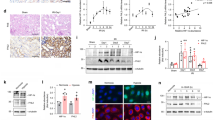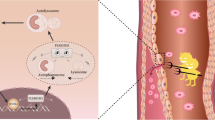Abstract
Diabetic retinopathy (DR) is one of the leading causes of blindness in diabetic patients. However, the pathogenesis of DR is complex, and no firm conclusions have been drawn so far. It has become a hot spot in ophthalmology research to deeply study the mechanism of DR pathological changes and find effective treatment options. Human retinal microvascular endothelial cells (HRMECs) were induced by high glucose (HG) to construct DR cell model. CCK-8 assay was used to detect the viability of HRMECs. Transwell assay was used to detect the migration ability of HRMECs. Tube formation assay was used to identify the tube formation ability of HRMECs. The expressions of USP14, ATF2 and PIK3CD were detected by Western blot analysis and qRT-PCR assay. Immunoprecipitation (IP) was used to ascertain the relationship of USP14 and ATF2. To explore the regulatory relationship between ATF2 and PIK3CD by dual-luciferase reporter gene assay and Chromatin immunoprecipitation (ChIP) assay. High glucose treatment promoted the proliferation, migration, and tube formation of HRMEC, and the expressions of USP14, ATF2 and PIK3CD were significantly up-regulated. USP14 or ATF2 knockdown inhibited HG-induced HRMECs proliferation, migration, and tube formation. USP14 regulated the expression of ATF2, and ATF2 promoted PIK3CD expression. PIK3CD overexpression attenuated the inhibitory effectiveness of USP14 knockdown on proliferation, migration and tube formation of DR cell model. Here, we revealed that USP14 regulated the ATF2/PIK3CD axis to promote proliferation, migration, and tube formation in HG-induced HRMECs.





Similar content being viewed by others
Data Availability
The datasets generated during and/or analyzed during the current study are available from the corresponding author on reasonable request.
Abbreviations
- DR:
-
Diabetic retinopathy
- HG:
-
High glucose
- HRMECs:
-
Human retinal microvascular endothelial cells
- ChIP:
-
Chromatin immunoprecipitation
- VEGF:
-
Vascular endothelial growth factor
- UPS:
-
Ubiquitin–proteasome system
- DUB:
-
Deubiquitinating enzyme
- USP1:
-
Ubiquitin-specific protease 14
- ATF:
-
Activating transcription factor 2
- PI3Kδ or PIK3CD:
-
Phosphoinositide-3 kinase catalytic subunit δ
- CCK:
-
Cell Counting Kit-8
- FBS:
-
Fetal bovine serum
- PBS:
-
Phosphate buffered saline
- qRT-PCR:
-
Quantitative real-time PCR
- PVDF:
-
Poly vinylidene difluoride filter
- SDS-PGE:
-
Sodium dodecyl sulfate–polyacrylamide gel electrophoresis
References
Arrigo A, Aragona E, Bandello F (2022) VEGF-targeting drugs for the treatment of retinal neovascularization in diabetic retinopathy. Ann Med 54(1):1089–1111
Bek T (2018) Arterial oxygen saturation in neovascularizations in proliferative diabetic retinopathy. Retina 38(12):2301–2308
Colomiere M, Permezel M, Riley C, Desoye G, Lappas M (2009) Defective insulin signaling in placenta from pregnancies complicated by gestational diabetes mellitus. Eur J Endocrinol 160(4):567–578
Di Y, Zhang Y, Yang H, Wang A, Chen X (2015) The mechanism of CCN1-enhanced retinal neovascularization in oxygen-induced retinopathy through PI3K/Akt-VEGF signaling pathway. Drug Des Devel Ther 9:2463–2473
Du MR, Yan L, Li NS, Wang YJ, Zhou T, Jiang JL (2018) Asymmetric dimethylarginine contributes to retinal neovascularization of diabetic retinopathy through EphrinB2 pathway. Vascul Pharmacol 108:46–56
Dumitrescu AG, Istrate SL, Iancu RC, Guta OM, Ciuluvica R, Voinea L (2017) Retinal changes in diabetic patients without diabetic retinopathy. Rom J Ophthalmol 61(4):249–255
Forand A, Koumakis E, Rousseau A, Sassier Y, Journe C, Merlin JF et al (2016) Disruption of the phosphate transporter Pit1 in hepatocytes improves glucose metabolism and insulin signaling by modulating the USP7/IRS1 interaction. Cell Rep 16(10):2736–2748
Foukas LC, Berenjeno IM, Gray A, Khwaja A, Vanhaesebroeck B (2010) Activity of any class IA PI3K isoform can sustain cell proliferation and survival. Proc Natl Acad Sci USA 107(25):11381–11386
Fransson S, Uv A, Eriksson H, Andersson MK, Wettergren Y, Bergo M et al (2012) p37delta is a new isoform of PI3K p110delta that increases cell proliferation and is overexpressed in tumors. Oncogene 31(27):3277–3286
Fu S, Zheng Y, Sun Y, Lai M, Qiu J, Gui F et al (2021) Suppressing long noncoding RNA OGRU ameliorates diabetic retinopathy by inhibition of oxidative stress and inflammation via miR-320/USP14 axis. Free Radic Biol Med 169:361–381
Geng M, Yang Y, Cao X, Dang L, Zhang T, Zhang L (2019) Targeting CDK12-mediated transcription regulation in anaplastic thyroid carcinoma. Biochem Biophys Res Commun 520(3):544–550
Jiang N, Wang X, Xie X, Liao Y, Liu N, Liu J et al (2017) lncRNA DANCR promotes tumor progression and cancer stemness features in osteosarcoma by upregulating AXL via miR-33a-5p inhibition. Cancer Lett 405:46–55
Kim HT, Goldberg AL (2017) The deubiquitinating enzyme Usp14 allosterically inhibits multiple proteasomal activities and ubiquitin-independent proteolysis. J Biol Chem 292(23):9830–9839
Lin Z, Qu S, Peng W, Yang P, Zhang R, Zhang P et al (2020) Up-regulated CCDC34 contributes to the proliferation and metastasis of hepatocellular carcinoma. Onco Targets Ther 13:51–60
Liu B, Jiang S, Li M, Xiong X, Zhu M, Li D et al (2018) Proteome-wide analysis of USP14 substrates revealed its role in hepatosteatosis via stabilization of FASN. Nat Commun 9(1):4770
Liu B, Zhang Z, Hu Y, Lu Y, Li D, Liu J et al (2019) Sustained ER stress promotes hyperglycemia by increasing glucagon action through the deubiquitinating enzyme USP14. Proc Natl Acad Sci USA 116(43):21732–21738
Lu L, Ma J, Liu Y, Shao Y, Xiong X, Duan W et al (2021) FSTL1-USP10-Notch1 signaling axis protects against cardiac dysfunction through inhibition of myocardial fibrosis in diabetic mice. Front Cell Dev Biol 9:757068
Lundgren S, Odrzywol E (2018) USP14 inhibitors as potential anticancer agents. Future Med Chem 10(15):1741–1743
Mao R, Shen J, Hu X (2021) BMSCs-derived exosomal microRNA-let-7a plays a protective role in diabetic nephropathy via inhibition of USP22 expression. Life Sci 268:118937
Mines MA, Goodwin JS, Limbird LE, Cui FF, Fan GH (2009) Deubiquitination of CXCR4 by USP14 is critical for both CXCL12-induced CXCR4 degradation and chemotaxis but not ERK ativation. J Biol Chem 284(9):5742–5752
Niestrata-Ortiz M, Fichna P, Stankiewicz W, Stopa M (2019) Enlargement of the foveal avascular zone detected by optical coherence tomography angiography in diabetic children without diabetic retinopathy. Graefes Arch Clin Exp Ophthalmol 257(4):689–697
Qiu F, Tong H, Wang Y, Tao J, Wang H, Chen L (2018) Recombinant human maspin inhibits high glucose-induced oxidative stress and angiogenesis of human retinal microvascular endothelial cells via PI3K/AKT pathway. Mol Cell Biochem 446(1–2):127–136
Shao Y, Dong LJ, Takahashi Y, Chen J, Liu X, Chen Q et al (2019) miRNA-451a regulates RPE function through promoting mitochondrial function in proliferative diabetic retinopathy. Am J Physiol Endocrinol Metab 316(3):E443–E452
Shi JX, Wang QJ, Li H, Huang Q (2016) Silencing of USP22 suppresses high glucose-induced apoptosis, ROS production and inflammation in podocytes. Mol Biosyst 12(5):1445–1456
Singer MA, Kermany DS, Waters J, Jansen ME, Tyler L (2016) Diabetic macular edema: it is more than just VEGF. F1000Res 5:1019
Sun XH, Xiao HM, Zhang M, Lin ZY, Yang Y, Chen R et al (2021) USP9X deubiquitinates connexin43 to prevent high glucose-induced epithelial-to-mesenchymal transition in NRK-52E cells. Biochem Pharmacol 188:114562
Tang L, Zhang C, Lu L, Tian H, Liu K, Luo D et al (2022) Melatonin maintains inner blood-retinal barrier by regulating microglia via inhibition of PI3K/Akt/Stat3/NF-kappaB signaling pathways in experimental diabetic retinopathy. Front Immunol 13:831660
Wang L, Liu WX, Huang XG (2020) MicroRNA-199a-3p inhibits angiogenesis by targeting the VEGF/PI3K/AKT signalling pathway in an in vitro model of diabetic retinopathy. Exp Mol Pathol 116:104488
Wang R, Xu Y, Niu C, Gao X, Xu X (2021) A novel small PEPTIDE H-KI20 inhibits retinal neovascularization through the JNK/ATF2 signaling pathway. Invest Ophthalmol vis Sci 62(1):16
Wu W, Zhou G, Han H, Huang X, Jiang H, Mukai S et al (2020) PI3Kdelta as a novel therapeutic target in pathological angiogenesis. Diabetes 69(4):736–748
Yao L, Zhong Y, He L, Wang Y, Wu J, Geng J et al (2020) Serum CA125 level Is associated with diabetic retinopathy in chinese patients with type 2 diabetes. Diabetes Metab Syndr Obes 13:1803–1812
Yi H, Ye J, Yang XM, Zhang LW, Zhang ZG, Chen YP (2015) High-grade ovarian cancer secreting effective exosomes in tumor angiogenesis. Int J Clin Exp Pathol 8(5):5062–5070
Zhao T, Wang D, Cheranov SY, Karpurapu M, Chava KR, Kundumani-Sridharan V et al (2009) A novel role for activating transcription factor-2 in 15(S)-hydroxyeicosatetraenoic acid-induced angiogenesis. J Lipid Res 50(3):521–533
Funding
Not applicable.
Author information
Authors and Affiliations
Contributions
F-TH: Formal analysis; Investigation; Resources; Data Curation; X-Lf: Conceptualization; Methodology; Validation; M-HL: Writing—Original Draft; C-YF: Visualization; Supervision; J-ZC\: Writing—Review & Editing; Project administration; Funding acquisition.
Corresponding author
Ethics declarations
Competing interests
The authors declare that they have no conflict of interest.
Ethical Approval
Not applicable.
Additional information
Publisher's Note
Springer Nature remains neutral with regard to jurisdictional claims in published maps and institutional affiliations.
Supplementary Information
Below is the link to the electronic supplementary material.
Rights and permissions
Springer Nature or its licensor (e.g. a society or other partner) holds exclusive rights to this article under a publishing agreement with the author(s) or other rightsholder(s); author self-archiving of the accepted manuscript version of this article is solely governed by the terms of such publishing agreement and applicable law.
About this article
Cite this article
He, FT., Fu, XL., Li, MH. et al. USP14 Regulates ATF2/PIK3CD Axis to Promote Microvascular Endothelial Cell Proliferation, Migration, and Angiogenesis in Diabetic Retinopathy. Biochem Genet 61, 2076–2091 (2023). https://doi.org/10.1007/s10528-023-10358-0
Received:
Accepted:
Published:
Issue Date:
DOI: https://doi.org/10.1007/s10528-023-10358-0




